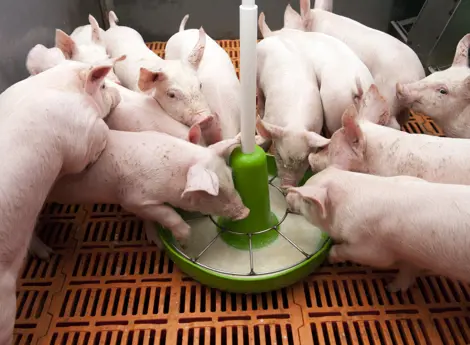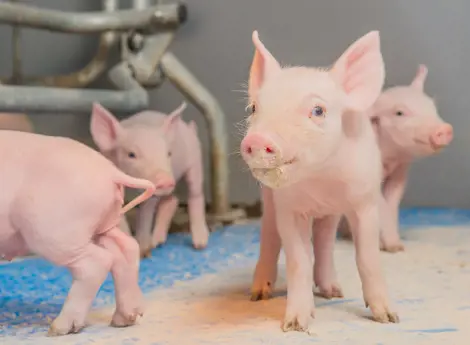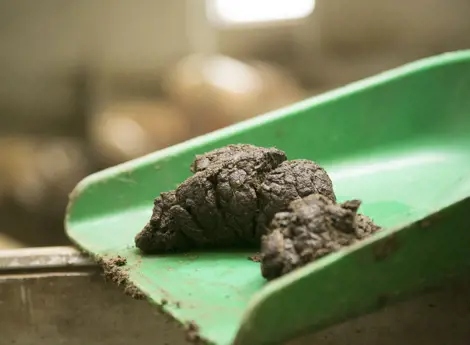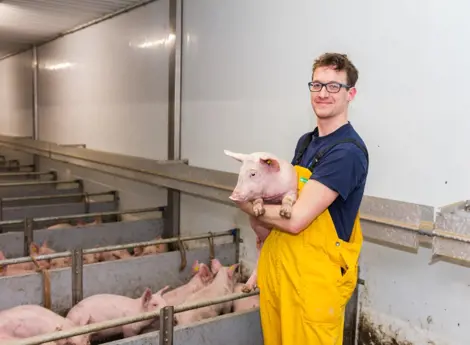Investing in piglets pays off
Healthy, well-growing piglets are profitable during the rearing period and,in addition, they also achieve good results in the fattening phase. These piglet will be easier to sell and might warrant a higher selling price. This is important, because the piglet selling prices determines the differences in feed profit between sow farms.
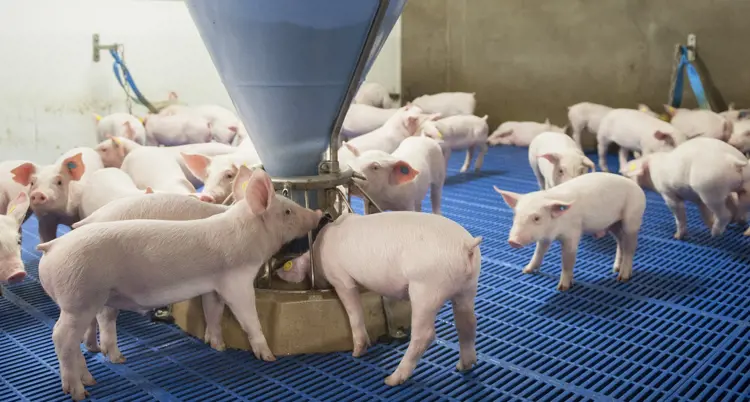
Invest immediately
It is worth while to invest in the quality of piglets. This already starts the first days after birth. Young new-born piglets must me reared as vital and healthy as possible. This starts with colostrum intake and subsequently with stimulating feed intake.
New-born piglets have very little body reserves in the form of fat and glycogen. After twelve to seventeen hours they have used their own reserves. If the piglets do not consume any colostrum within this timeframe, it will become harder to reach the udder on their own. The more colostrum piglets consume the higher their chances of survival. Research shows that of the piglets that consume less than 100 g colostrum, 40% survives, while of the piglets consuming 400 g colostrum or more almost 99% survives the first few days post-birth. The following measures can be implemented to ensure piglets take up colostrum early, often and in large volumes:
- Create a proper micro climate for the piglets so that they do not cool off too fast, make use of an infrared lamp behind the sow and a farrowing mat
- Sprinkle drying powder in the piglet nests
- Construct curves in the corners so that piglets do not get stuck in a corner and stay there
- Provide for an effective and clear cross-fostering protocol, available from your specialist
Second half of suckling period
In the second half of the suckling period it is important that piglets grow properly and are well-prepared for weaning. This means that all piglets must already take in solid feed during this phase. Piglets take up feed more easily after weaning if they already did so during the suckling period.
Investing after weaning
Feed intake also plays a very important role after weaning. The feed intake during the first two weeks after weaning determines for 70 percent the final rearing result and the quality of the piglets at delivery. If you make additional investments in labour and feed quality at this point in time, it will quickly pay off. During the suckling period piglets are accustomed to drink milk every hour. After weaning they therefore also eat a small amounts about twelve times a day. Light piglets consume more feed than heavy piglets during the first four days, after that heavy piglets eat more. The maintenance need of piglets immediately after weaning is approximately 150 g feed per day. On day three to four after weaning, all piglets must look nicely filled. To achieve this, the piglets must eat at least 0.5 kg of feed during the first three days after weaning. You can help the piglets to start eating early, often and in large quantities immediately after weaning.It is important that all piglets can eat at the same time. To accomplish this it is often necessary to put in additional round feed troughs in the first days after weaning. These must be filled at least three times per day. When the troughs are being filled, the piglets get up and start looking for feed. This is an additional stimulus to start eating. The effect of the round troughs is that the piglets becomes more uniform and that feed intake and growth can increase by 40 percent.
In addition to the round feed troughs you can improve feed intake by choosing the right type of feed. If, during the initial days you supply a pre-starter feed rather than a weaning feed, you can clearly increase feed intake. For example, when a prestarter is fed, the piglets take in 60 percent more energy than they do when a standard weaning feed is administered.
Feed intake during rearing process
The feed intake of piglets in relation to the desired growth is very important in terms of choosing the right feed and profit during the piglet rearing process. This is why our advice is to measure the piglets' feed intake regularly: during the first three days after weaning and during week one, two, three, four, five and six after weaning. When you know the feed intake, you can develop a proper feeding strategy with your specialist. Not knowing the feed intake makes this impossible. You cannot combine the proper feed composition to the intake and provide too luxury or to simple feeds. In the first case you are spending more money than necessary and in the second case the piglets do not grow properly and they stay below quality norms.
Investing in piglet rearing pays off
A good start is half the work! This definitely applies to rearing young piglets. Actively stimulating feed intake and measuring it are the key points. Making additional investments in rearing young piglets is important and has a quick payback. Your technical results are better, the selling prices are higher and you have less work during the later stages of the rearing period.

